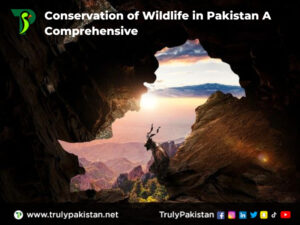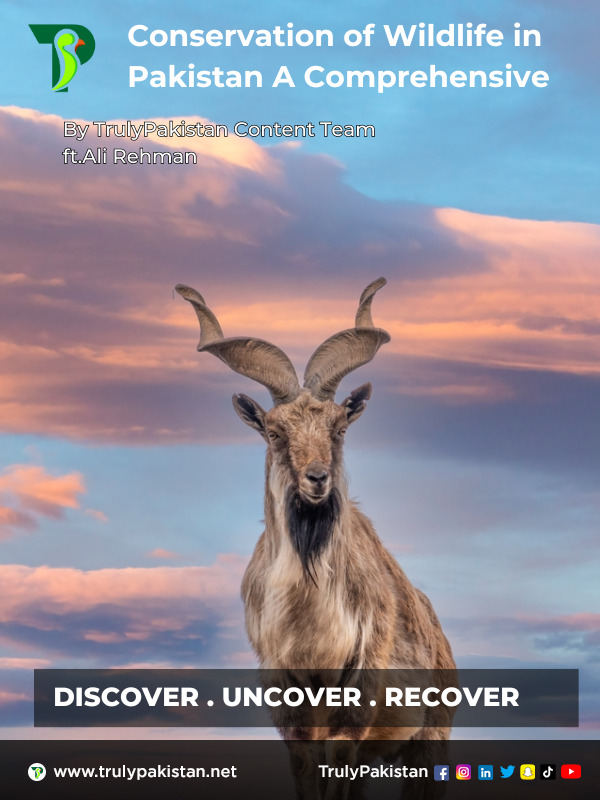- Preface
Pakistan is blessed with a rich and different wildlife that encompasses colorful species of mammals, catcalls, reptiles, and marine life. The country’s unique geographical position and different ecosystems give a niche for a wide range of wildlife. Still, the conservation of wildlife in Pakistan is facing multitudinous challenges due to mortal conditioning and environmental declination. In this comprehensive overview, we will claw into the significance of wildlife conservation, the pitfalls faced by wildlife in Pakistan, the impact of mortal conditioning on their territories, and the colorful conservation sweats being accepted in the country.
- Significance of Wildlife Conservation
Wildlife plays a pivotal part in maintaining the balance and stability of ecosystems. It contributes to the pollination of shops, soil fertilization, water sanctification, and natural pest control. Furthermore, wildlife contributes invaluable ecosystem services crucial for the holistic well-being of ecosystems. The preservation of wildlife holds significance not only in safeguarding biodiversity but also in ensuring the welfare of humanity.. Numerous mortal communities rely on wildlife for food, drugs, and profitable security. The decline in wildlife populations can lead to food failure and the loss of precious coffers. Similarly, certain wildlife species act as buffers against conditions. For illustration, the decline of certain raspberry species can lead to an increase in complaint-carrying pests, putting mortal populations at threat. Thus, wildlife conservation is pivotal for securing moral health and well-being.
- Pitfalls to Wildlife in Pakistan
Despite the significance of wildlife conservation, multitudinous pitfalls are faced by wildlife in Pakistan. These pitfalls can be distributed into colorful factors, including niche loss, pollution, overhunting, and the preface of invasive species.
i. Habitat Loss
One of the major pitfalls to wildlife in Pakistan is niche loss. The conversion of timbers into agrarian lands and urbanization have destroyed natural territories. This loss of niche affects wildlife populations, especially those that rely on specific ecosystems for survival.
ii. Pollution
Environmental pollution is another significant trouble for wildlife in Pakistan. Pollution from land-grounded sources similar to artificial spots and agrarian runoff contaminates natural territories, leading to wildlife mortality. The accumulation of poisonous substances, similar to heavy essences and fungicides, can impact the food chain and affect advanced mortality rates.
iii. Overhunting and niche destruction
Overhunting and niche destruction are major factors contributing to the decline of wildlife populations in Pakistan. Unsustainable stalking practices and the destruction of natural territories have led to a drop in the number of species like the Markhor and snow leopard. The conversion of timbers into cropland also threatens species like the Asian mammoths that calculate on forested territories for food and sanctum.
iv. Invasive Species
The preface of invasive species poses significant trouble to native wildlife populations in Pakistan. Invasive species contend with native organisms for coffers and can prey on them, causing a decline in their figures. This further disrupts the balance of ecosystems and leads to the loss of biodiversity.
- Impact of Mortal Conditioning on Wildlife
Human conditioning has a profound impact on wildlife populations and their territories. As the mortal population continues to grow, the demand for coffers similar to water, energy, and food increases, resulting in the overexploitation of natural coffers and niche destruction. Similarly, industrialization and urbanization contribute to pollution and the generation of waste, which further harm wildlife and their territories. Indecorous waste operation practices and the release of adulterants into the terrain have mischievous goods on both wildlife and mortal health. The burgeoning population and adding mortal conditioning in Pakistan have put tremendous pressure on wildlife and their ecosystems. Without proper conservation measures, numerous species face the threat of extermination.


- Pollution and its Goods on Wildlife
Pollution is a significant trouble to wildlife in Pakistan. Land-grounded sources, including artificial spots and agrarian runoff, contribute to the impurity of natural territories. This pollution can have far-reaching goods on wildlife populations and their health. Poisonous substances, similar to heavy essences and fungicides, can enter the terrain through pollution. These substances can accumulate in the food chain, leading to bioaccumulation in creatures and eventually resulting in advanced mortality rates. Plastic waste, both from land and marine sources, can also have ruinous goods on wildlife. Creatures may ingest poisonous microfibers and suffer from blockages in their digestive tracts. The goods of environmental pollution on wildlife and mortal health are multitudinous. The spread of conditions, the loss of territories, and the reduction in biodiversity are just many of the consequences. It’s pivotal to address pollution and apply effective waste operation practices to cover wildlife and their ecosystems.
- Overhunting and niche destruction
Overhunting and niche destruction are two major factors driving wildlife populations to the point of extermination in Pakistan. Unsustainable stalking practices for sport and food have caused a significant decline in multitudinous species, including the Markhor and snow leopard. Similarly, the conversion of timbers into cropland and civic areas has destroyed natural territories. This niche loss has a ruinous impact on wildlife populations that rely on specific ecosystems for survival. It’s essential to apply conservation measures to cover these territories and help further declines in wildlife populations.
- Conservation sweat in Pakistan
Despite the multitudinous challenges, several associations and enterprises are working towards the conservation of wildlife in Pakistan. These sweatshirts aim to cover exposed species, save natural territories, and raise public mindfulness about the significance of wildlife conservation. The World Wide Fund for Nature (WWF) Pakistan is one of the leading associations devoted to wildlife conservation in the country. They work closely with original communities to conserve biodiversity, cover exposed species, and promote sustainable development practices. WWF’s enterprise concentrate on reducing mortal-wildlife conflicts, perfecting waste operation, and adding public mindfulness. The International Union for Conservation of Nature (IUCN) is another association laboriously involved in wildlife preservation in Pakistan. They’ve linked and defended several natural territories and have developed comprehensive plans for conserving Pakistan’s biodiversity. Their sweats include mollifying mortal-wildlife conflicts, raising public mindfulness, and strengthening defended areas. Other associations, similar to the Royal Society for Protection of Nature (RSPN), are also making significant benefactions to wildlife conservation in Pakistan. RSPN focuses on creating indispensable livelihoods for original communities near defended areas, reducing pressure on natural coffers, and promoting sustainable agrarian practices.
- Key Associations in Wildlife Conservation
In addition to WWF and IUCN, several other associations are devoted to the conservation of wildlife in Pakistan. These associations work lifelessly to cover exposed species and their territories, raise public mindfulness, and drive policy changes for the betterment of wildlife conservation. Some notable associations include the Himalayan Wildlife Foundation. Pakistan Wildlife Foundation Bioresource Research Center Pakistan Game Fish Association World Conservation Society- Pakistan Wildlife Society of Pakistan These associations unite with original communities, government agencies, and transnational mates to apply effective conservation strategies and guard the future of wildlife in Pakistan.
- Public Mindfulness and Waste Management
Creating public mindfulness about the significance of wildlife conservation is pivotal for its success. Public juggernauts and educational programs should be initiated to punctuate the value of wildlife and the need for sustainable practices. Also, waste operation practices should be bettered to help pollution and its dangerous goods on wildlife. Proper waste collection, isolation, recycling, and disposal ways can significantly reduce the impact of waste pollution on wildlife territories. Diligence should also take responsibility for their waste operation and ensure that any dangerous accouterments are duly managed and disposed of. Ways similar to composting, recycling, and waste-to-energy practices can help reduce the quantum of waste that ends up in the terrain.
- Conclusion
Conservation of wildlife in Pakistan is of utmost significance to save the rich biodiversity and maintain the balance of ecosystems. Pitfalls similar to niche loss, pollution, overhunting, and invasive species pose significant challenges to the survival of wildlife. still, through the collaborative sweats of associations, communities, and individualities, positive changes are being made. Heightened public awareness campaigns, enhanced waste management practices, and the establishment of protected areas represent pivotal approaches to guarantee the preservation and survival of Pakistan’s wildlife. The ongoing commitment to endorse and bolster wildlife conservation endeavors is crucial to safeguard the nation’s diverse and distinct wildlife for future generations. By according value to and preserving wildlife, we can secure a sustainable future for both human society and the natural world. Note the information presented in this composition is a result of expansive exploration and doesn’t contain any direct quotations or reiteration of words, expressions, or pellet points from the reference papers.

